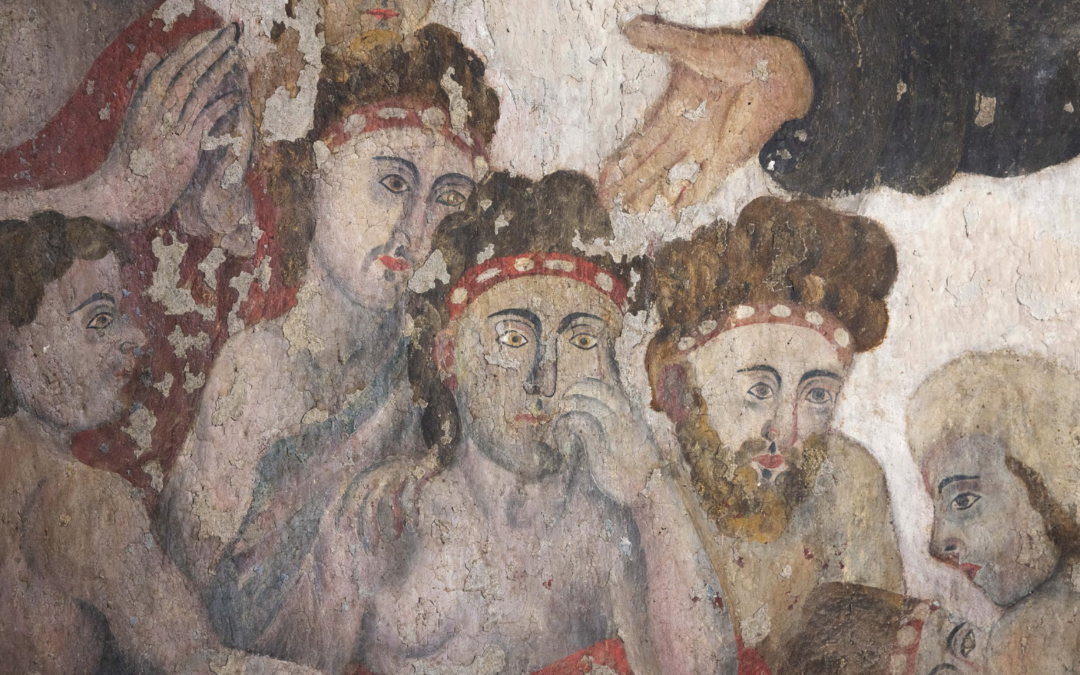For the next few months, Patronato San Xavier’s conservation team will be working to conserve the artwork in the main cupola. The last time any conservation took place in the dome was in 1994, as part of the first major restoration campaign for the interior artwork. Historically, the dome has been more susceptible to moisture infiltration than other parts of the building. The historical record and physical evidence attest that in the past, the cupola has been subject to extensive moisture infiltration, primarily through the four quatrefoil windows at the drum and from four substantial cracks that penetrate the cupola. Moisture infiltration and the presence of residual salts have caused significant flaking and pulverization of the original paint finishes. The team will work systematically to clean and stabilize the fragile wall paintings. Original paint will be consolidated using rabbit skin glue, which is known to be similar to the original material used. Incompatible repairs will be removed and replaced with materially-compatible lime-sand-nopal juice plaster. Surfaces will be cleaned of dust and surface deposits using appropriate methods and materials and limited inpainting will be performed, solely to minimize the appearance of new areas of loss.
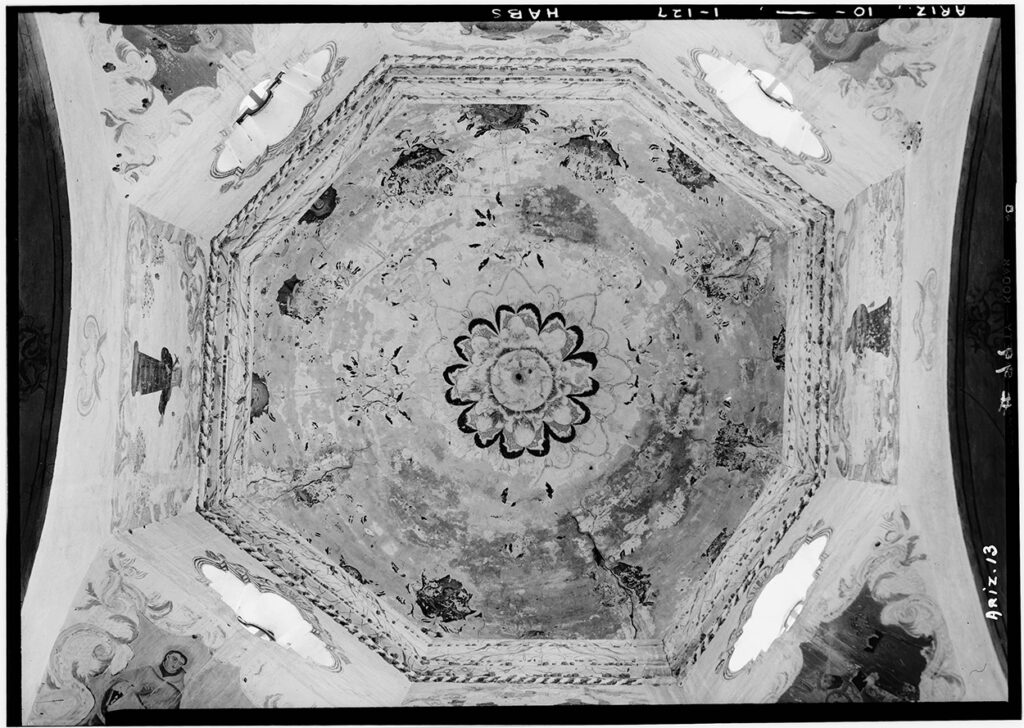
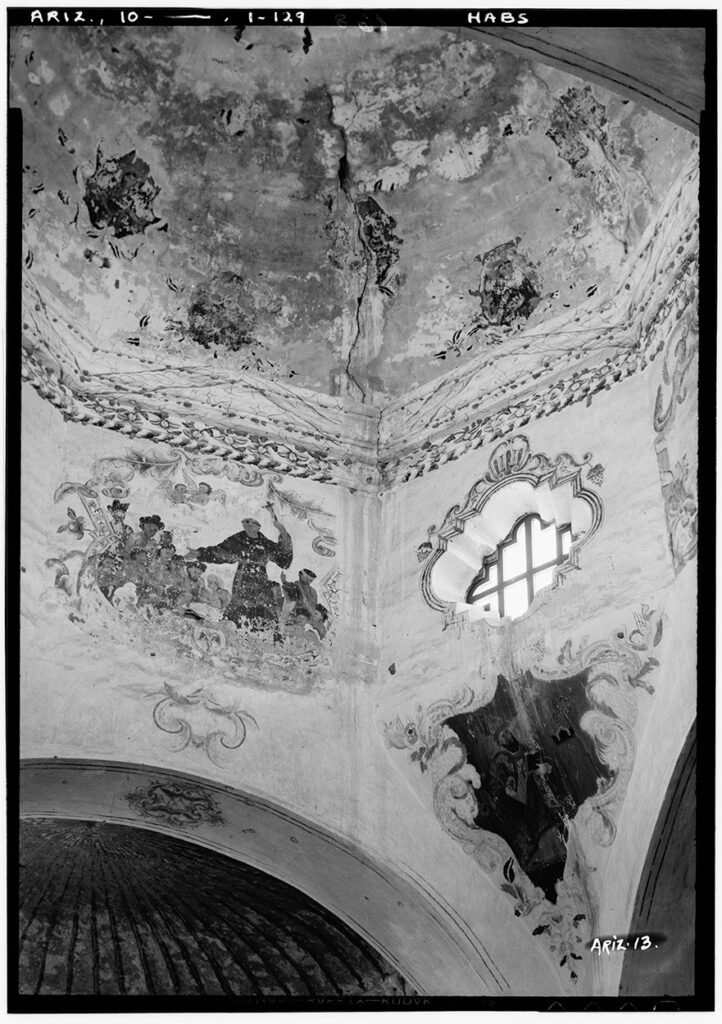
San Xavier’s cupola is a hemispherical dome that rests on an octagonal drum at the church’s crossing between the nave, sanctuary, and east and west transepts. The drum is supported by four pendentives. The interior surfaces of the cupola, drum, and pendentives are adorned with 18th century oil-based wall paintings. The cupola features a floral medallion at the center, surrounded by 16 cartouches of angels and saints. The four walls of the drum and four pendentives feature paintings of different saints. Over time, salts present in water vapor entering the church migrate to the surface and cause lifting and pulverization of the paint layers. When conservation work first took place in the dome in 1994, conditions were very bad.
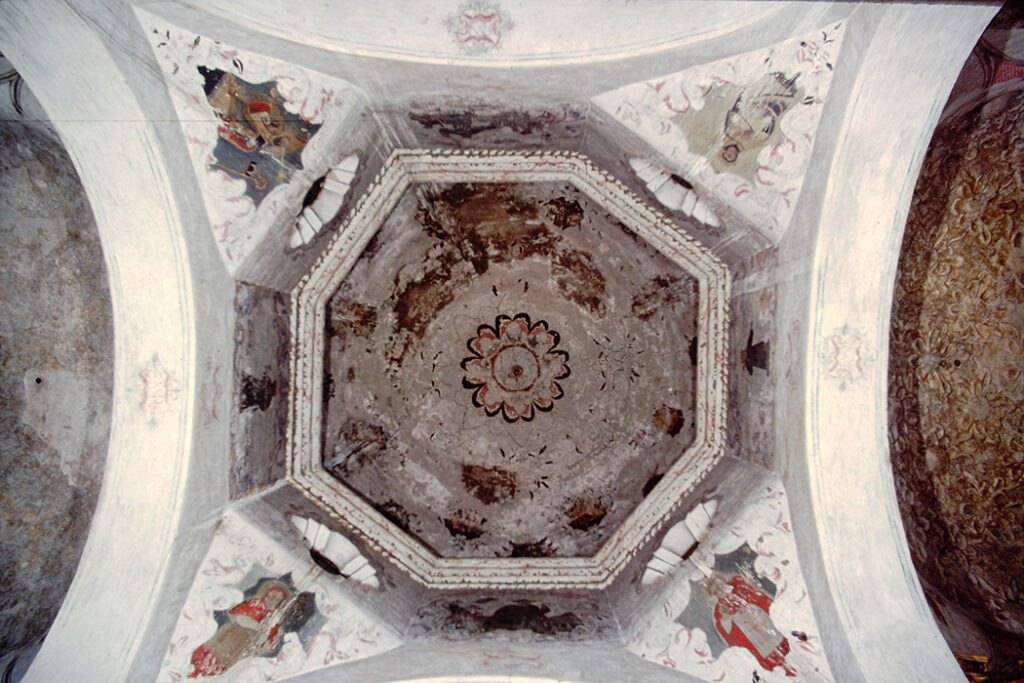
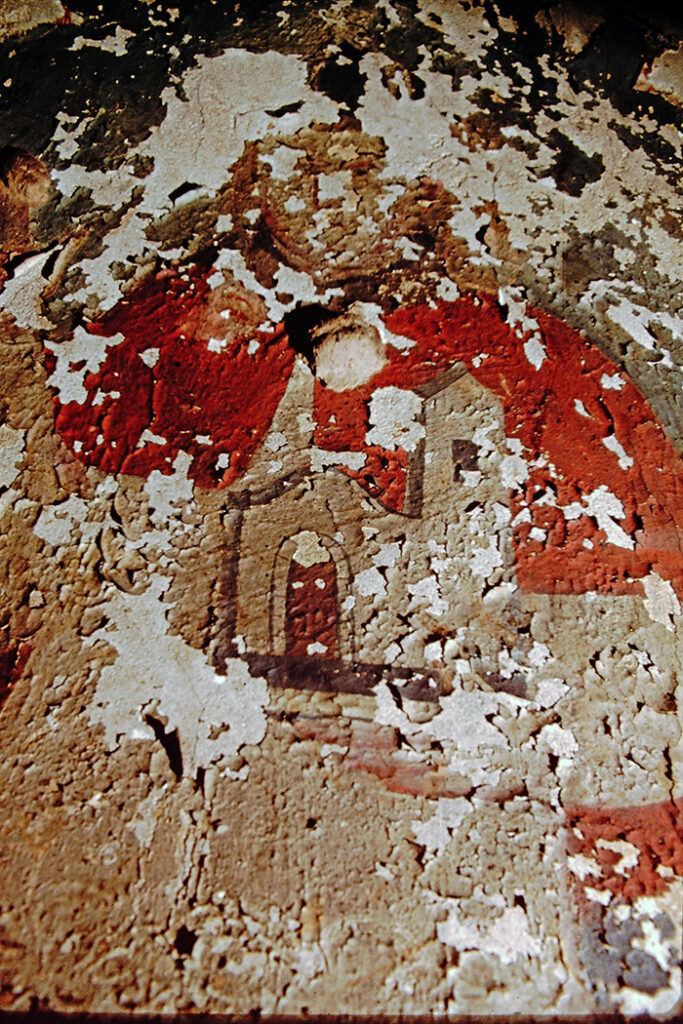
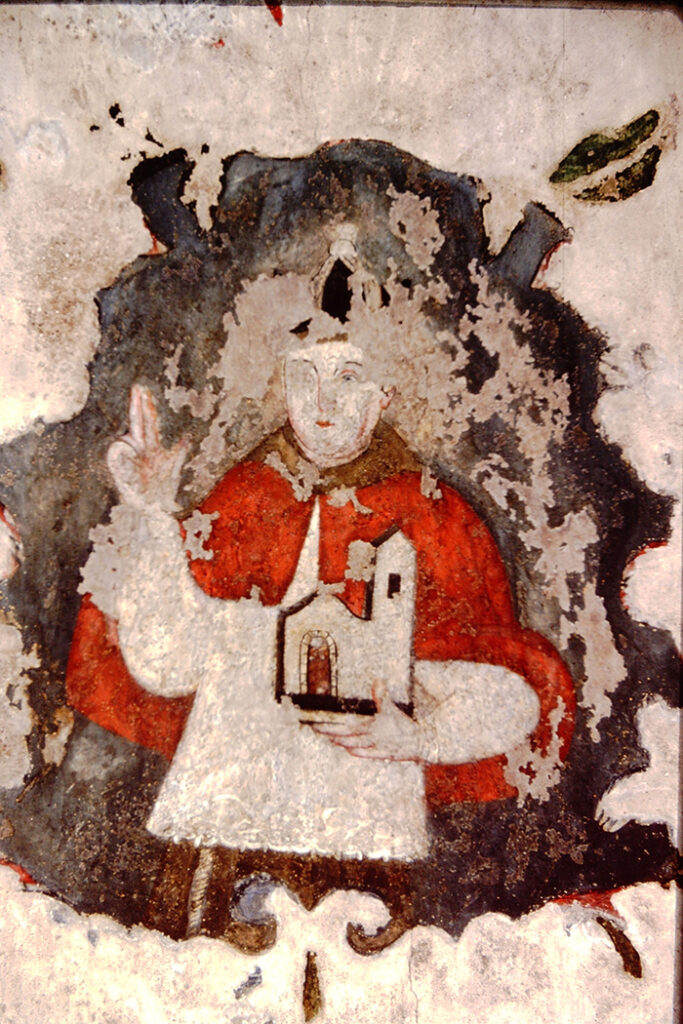
Though it has been 29 years since any conservation treatment or maintenance has happened in the dome, the conditions today are much better than they were in 1994. However, the presence of residual salts do mean that flaking paint continues to be a critical issue. We hope that in the future we can maintain a cycle of regular maintenance that allows us to monitor and treat San Xavier’s fragile wall paintings in a timely and effective manner.
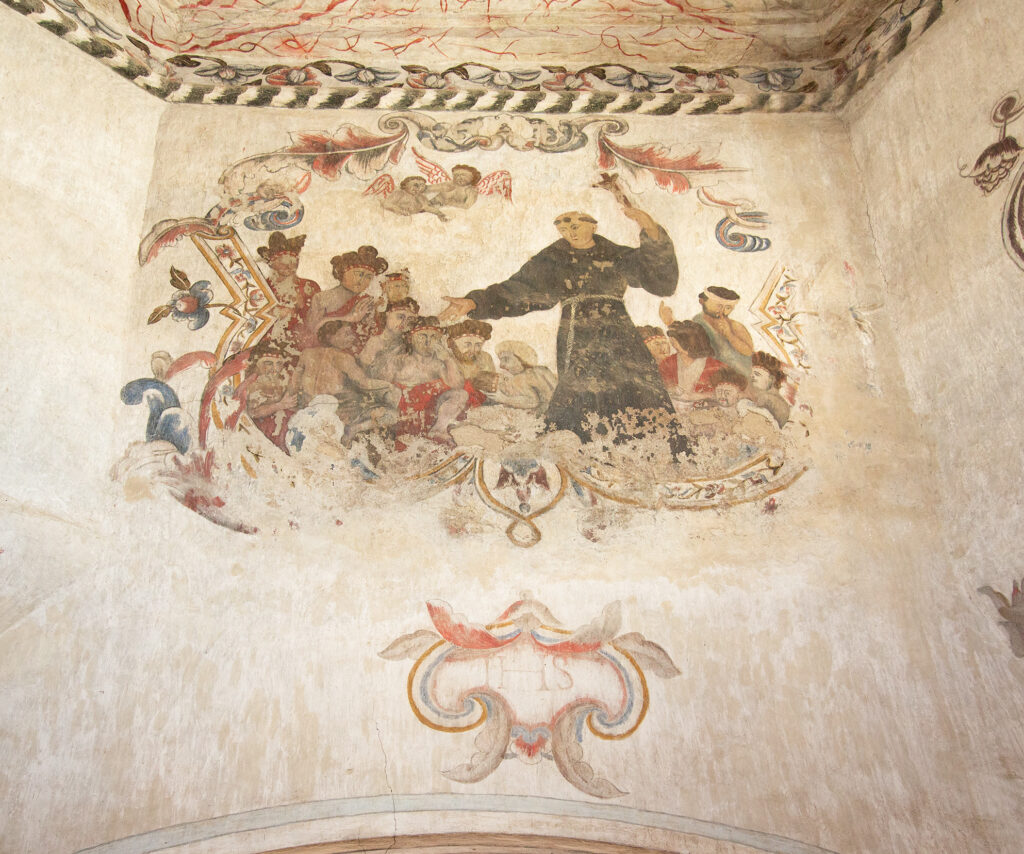
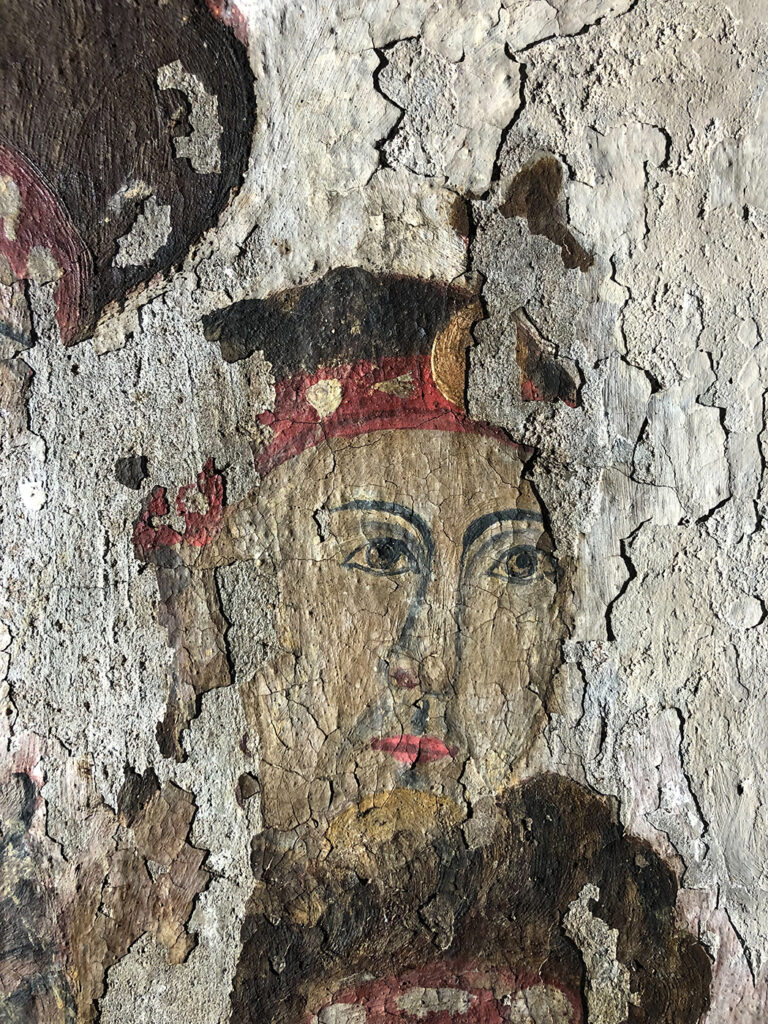
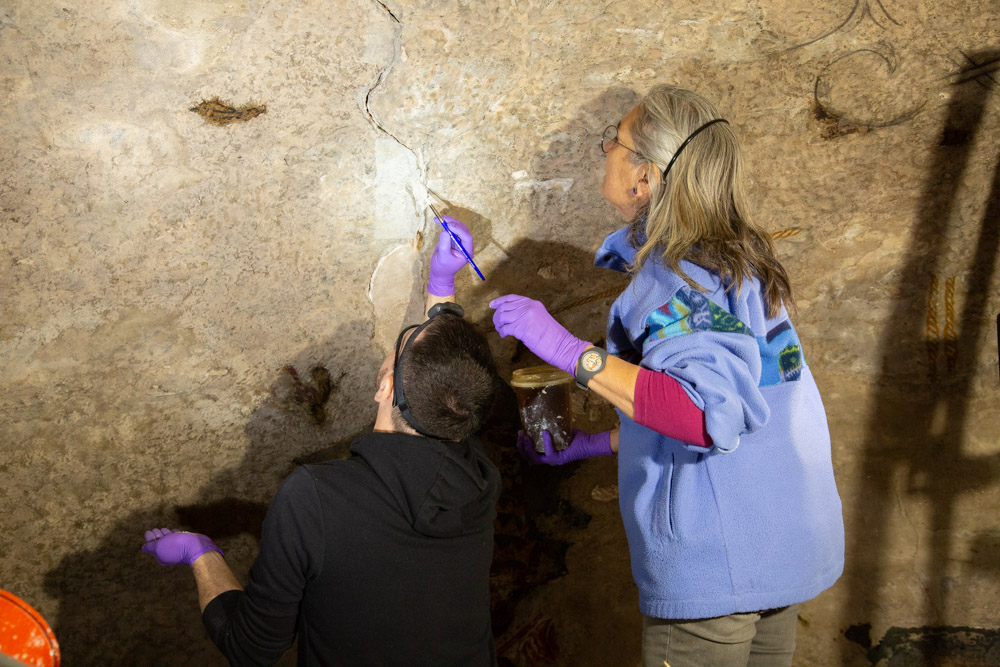
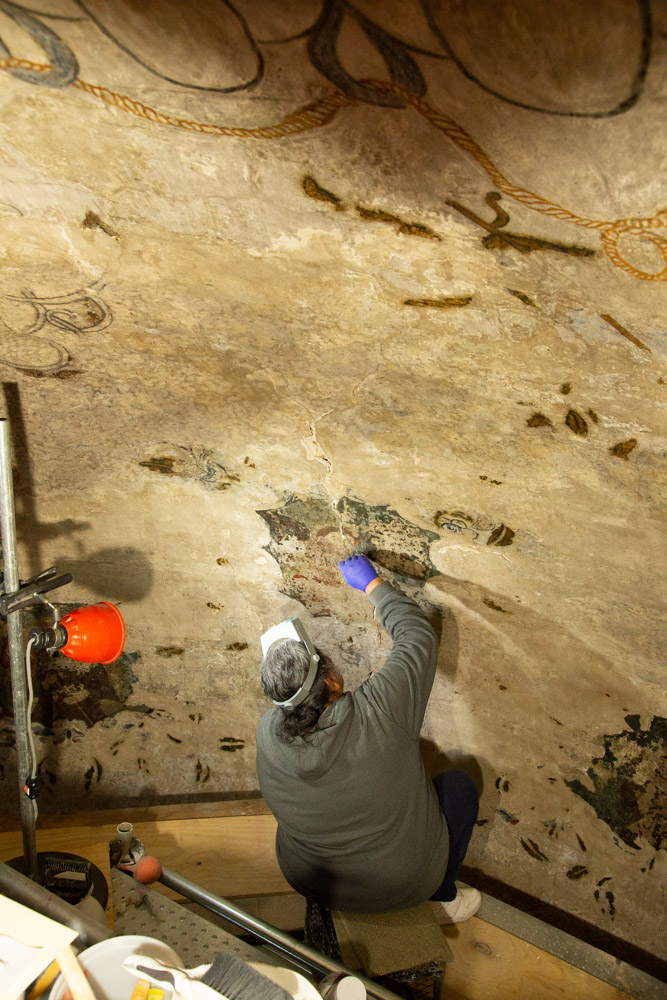
Stay tuned for future updates on our progress!

